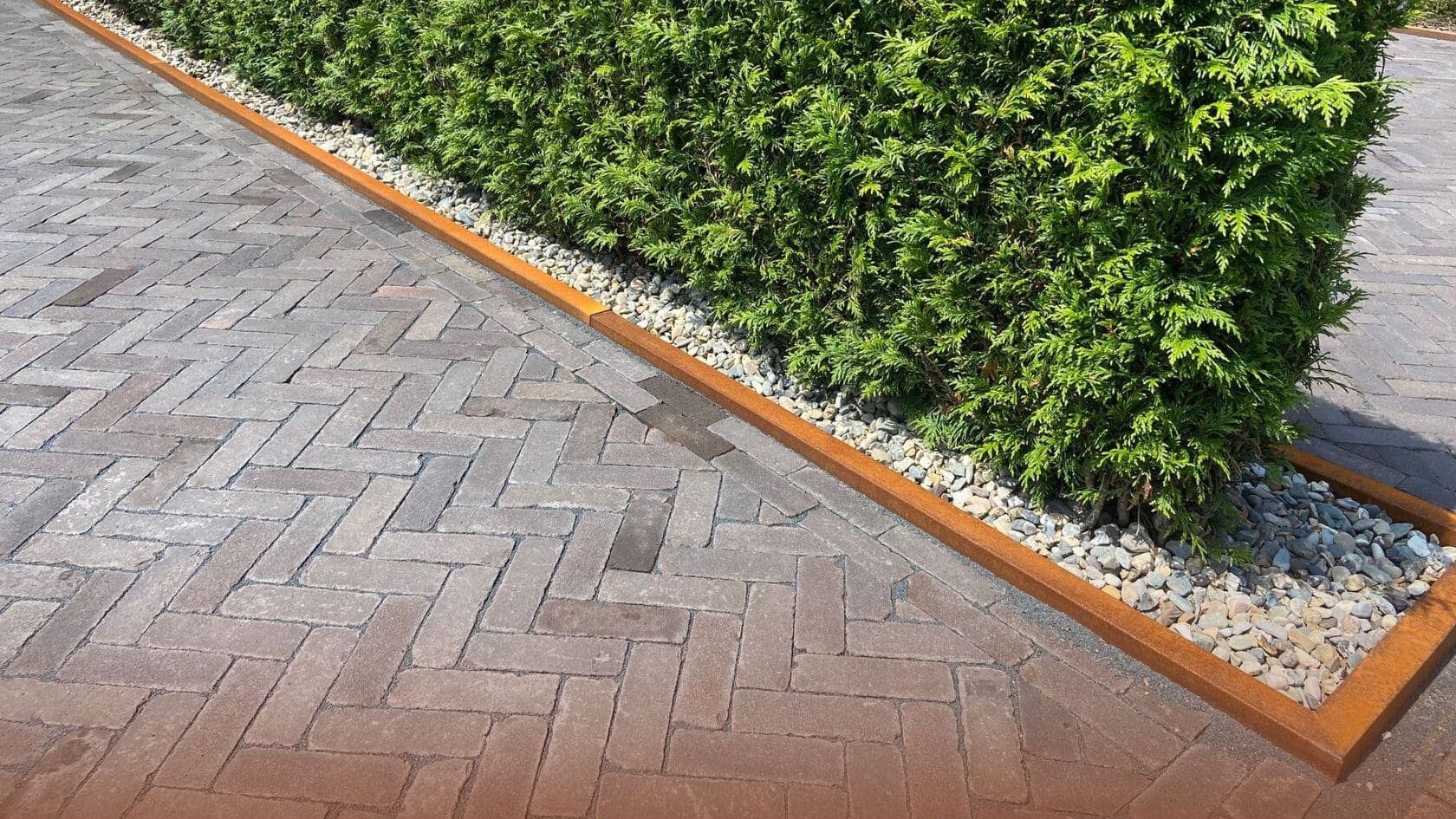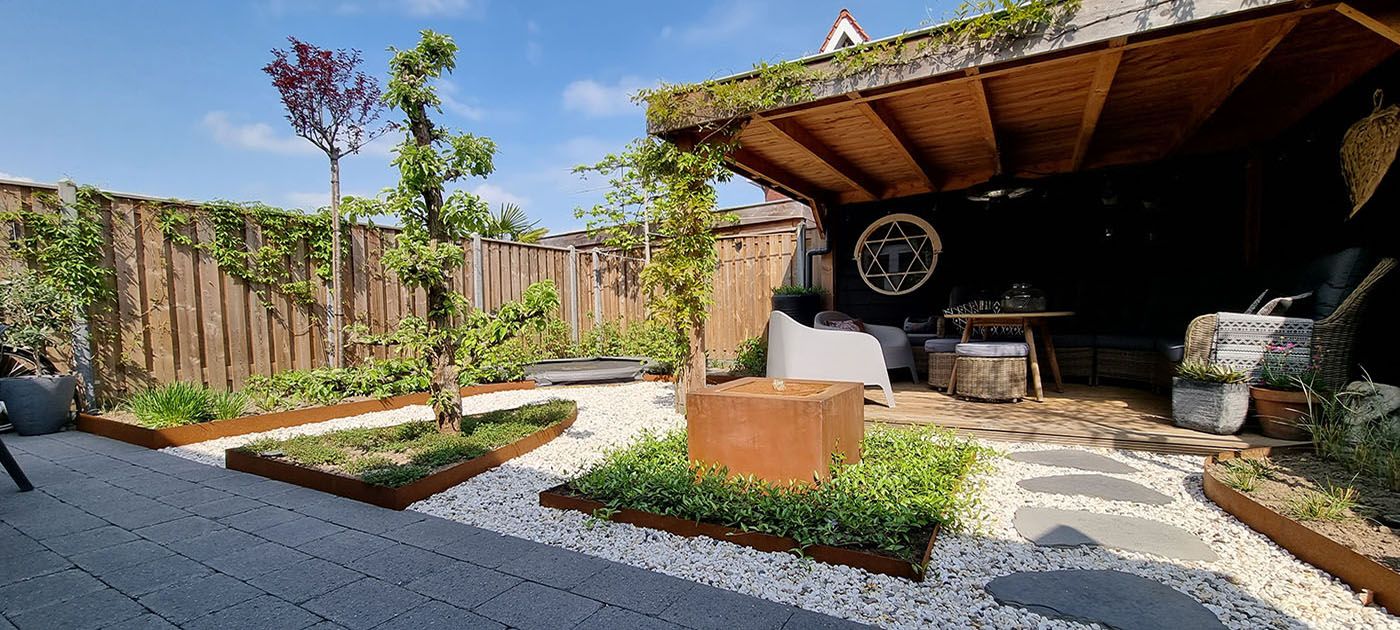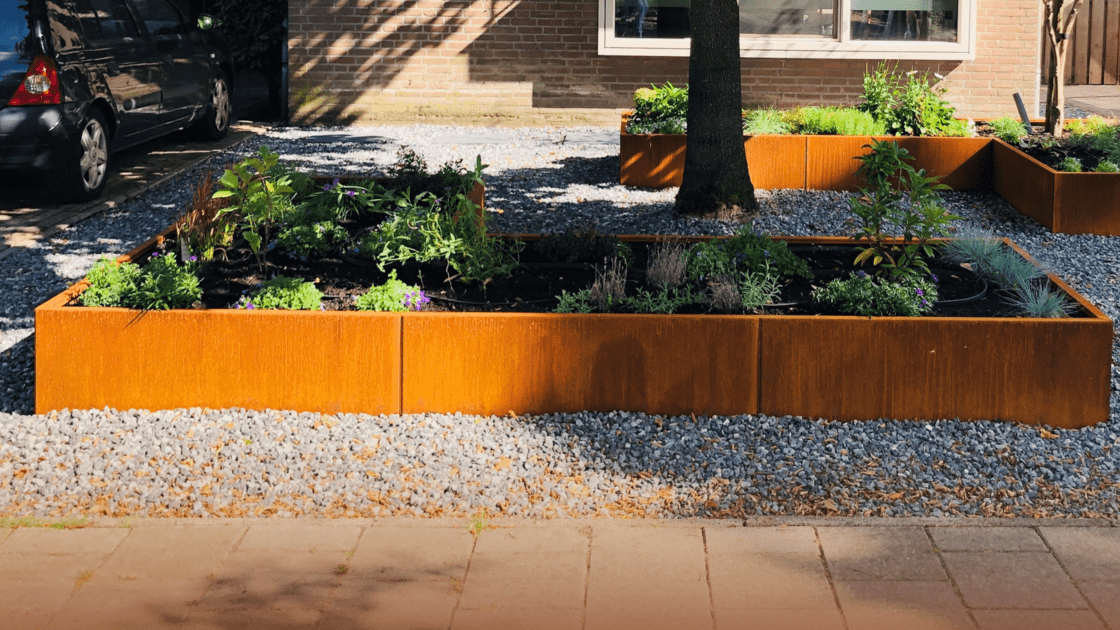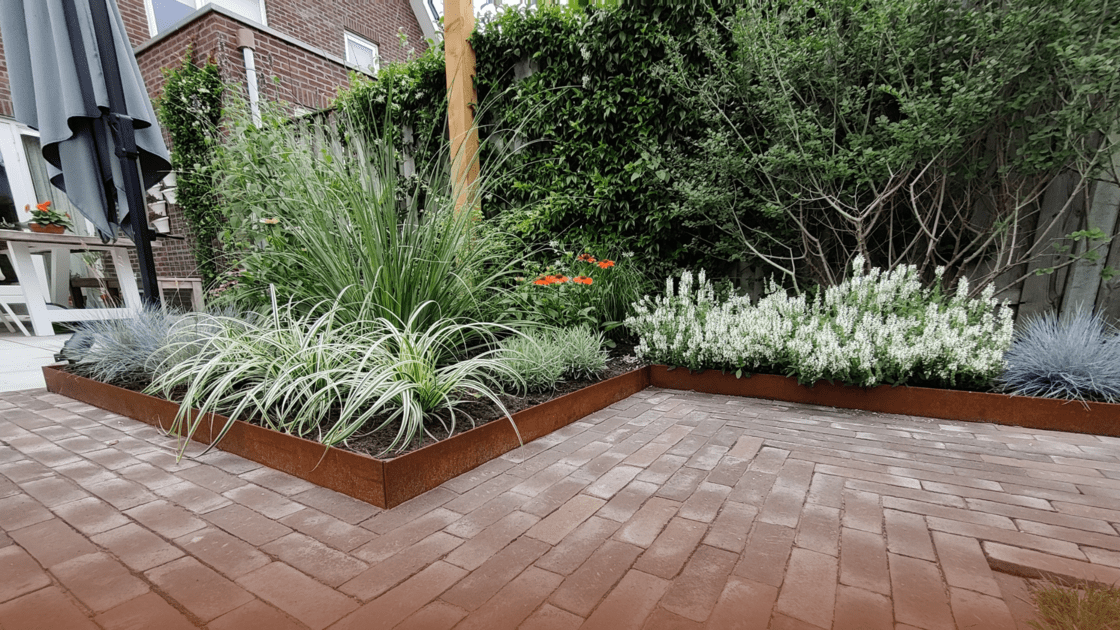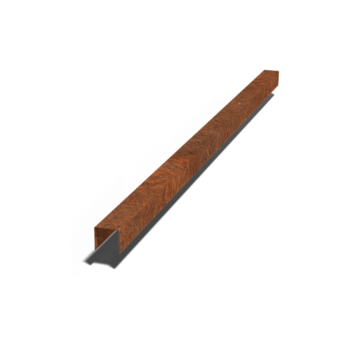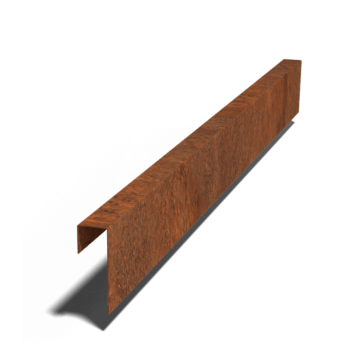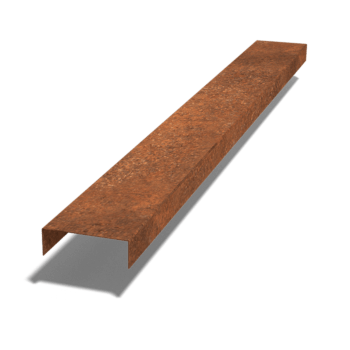Confirming U-profile: What should you pay attention to?
Corten steel overlay profiles, also known as U-profiles, are a beautiful way to finish edges in your garden neatly. They are often used for garden borders, paths, or other separations. With these metal profiles, you tidy up disturbing or unsightly edges and give your garden a well-kept appearance.
Installing these profiles is easy, but it is important to do it correctly. This ensures that the profiles remain sturdy and last a long time. In this blog, you will read step by step how to place a U-profile on concrete in your garden.
Summary
- Overlay profiles, or U-profiles, are metal edges that provide a nice finish for garden borders, paths, and separations.
- Corten steel is a commonly used material for these profiles. It develops a protective rust layer, making it long-lasting and requiring little maintenance.
- You can easily install overlay profiles yourself. It is essential to be well prepared and to place them correctly. This way, they will stay sturdy and last long.
What is an overlay profile or U-profile?
An overlay profile, or U-profile, is a steel edge that you place over existing edges, such as concrete or wooden boards, to finish them neatly. These profiles are often used in gardens, for example at paths, plant boxes, and patios.
A commonly used material for overlay profiles is corten steel due to its unique properties. It develops a natural rust layer that not only provides a warm appearance but also protects the profile against further rust formation. As a result, the profile remains beautiful for years and requires little maintenance.
Reading tip
Want to know more about the rusting process of corten steel? Read our blog ‘The rusting process of corten steel explained’.
How do you install a U-profile?
To achieve the best result, it is important that you install the overlay profile correctly. The following step-by-step plan explains how to approach this professionally:
Step 1: Planning and design
Measure accurately
Start by precisely measuring the edges you want to cover. Note the length, width, and height of the edge. This way you will know exactly what size you need later.
Choose the right material
Decide which material best fits your environment. For example, corten steel is a good choice if the profile will come into direct contact with soil and water.
Step 2: Preparing the location
Remove obstacles
Clear the area where you want to lay the profiles of obstacles. Remove stones, roots, and other debris that may be in the way.
Level the ground
Next, ensure that the ground is completely flat. A flat surface helps to lay the profile firmly and prevents it from sinking or tilting later on.
Step 3: Placing the profile
Align the profile
Position the profile in the right place and use a level to check if it is straight. This prevents crooked edges and gives a neat finish.
Secure firmly
Use a high tack adhesive to secure the corten steel U-profile properly. First ensure that the concrete edge is smooth and even. This ensures that the profile stays securely in place and does not come loose.
Step 4: Inspection
Post-care
After a few weeks, it is advisable to check the profile again. See if everything is securely in place and correct any sinking.
What are common mistakes when attaching an overlay profile?
Although it is easy to install a U-profile in your garden, mistakes that can affect the final result are often made. Below, we discuss the most common mistakes and how to avoid them:
Incorrect measurements
A common mistake is not measuring the edge correctly. If you choose a wrong profile size, it can lead to gaps, loose profiles, or tension on the profile. This can ultimately result in damage to the product. Therefore, take the time to measure all dimensions carefully. In the section ‘How to determine the correct dimensions for an overlay profile?’ you can read how to do that precisely.
Poor anchoring
A profile that is not secured properly can shift, especially on loose ground. Ensure a stable, flat base and use the right fixing materials to keep the profile in place.
How do you determine the correct dimensions for an overlay profile?
To avoid problems in the future, it is important to choose the right dimensions for an overlay profile. Here’s how to do it:
Length and height
First, measure the total length and height of the edge you want to cover. Then choose a profile that is slightly larger than the edge itself. This ensures that the edge is completely covered. This creates a sleek finish and prevents any visible concrete.
Standard sizes versus custom sizes
For most edges, you can choose from standard sizes. If the dimensions of your edge are atypical, custom sizes are a good solution. Also, pay attention to the width of the profile, ensuring that it fits well around the existing edge and remains secure.
What are the benefits of an overlay profile?
An overlay profile has many advantages. It beautifies your garden, lasts long, and is easy to maintain:
Aesthetics
An overlay profile provides a clean and professional finish to the edges in your garden. This gives your garden a neat and well-maintained appearance.
Durability
Corten steel overlay profiles are very durable due to the protective rust layer. This layer prevents further rust formation, allowing the profile to last a long time without needing to be replaced often.
Low maintenance
An overlay profile requires little maintenance once it is installed. The only thing needed is to regularly check for any settling or shifting.
How much does an overlay profile cost?
The price of an overlay profile depends on the dimensions and length you need. Below is an overview of some standard sizes and their corresponding prices:
| Dimensions (Height 1 x inner size x height 2) | Length | Price |
| 5x5x5 cm | 150 cm | From € 12.95 |
| 5x5x5 cm | 240 cm | From € 21.95 |
| 5x6x5 cm | 150 cm | From € 12.95 |
| 5x6x5 cm | 240 cm | From € 21.95 |
| 5x15x5 cm | 150 cm | From € 16.95 |
| 5x15x5 cm | 240 cm | From € 29.95 |
| 15x5x5 cm | 150 cm | From € 16.95 |
| 15x5x5 cm | 240 cm | From € 31.94 |
Tips and considerations
Finally, we have some handy tips for placing a U-profile in your garden. By considering the following advice, you can enjoy a beautiful result for a long time:
Maintenance and inspection
Corten steel requires little maintenance, but it is wise to check the profiles every year. See if they are still secure and resolve any settling issues immediately.
Sustainability
Corten steel is an eco-friendly choice. The material lasts a long time and requires little maintenance.
Conclusion
Overlay profiles are a convenient and attractive solution to neatly finish the edges of your garden. With corten steel, you choose a material that lasts long and looks good. By properly preparing the ground, measuring the edges accurately, and working carefully, you ensure that your garden looks neat and well-maintained for years to come.
Do you doubt whether you are doing everything right? Contact us for tailored advice or help from a professional.

